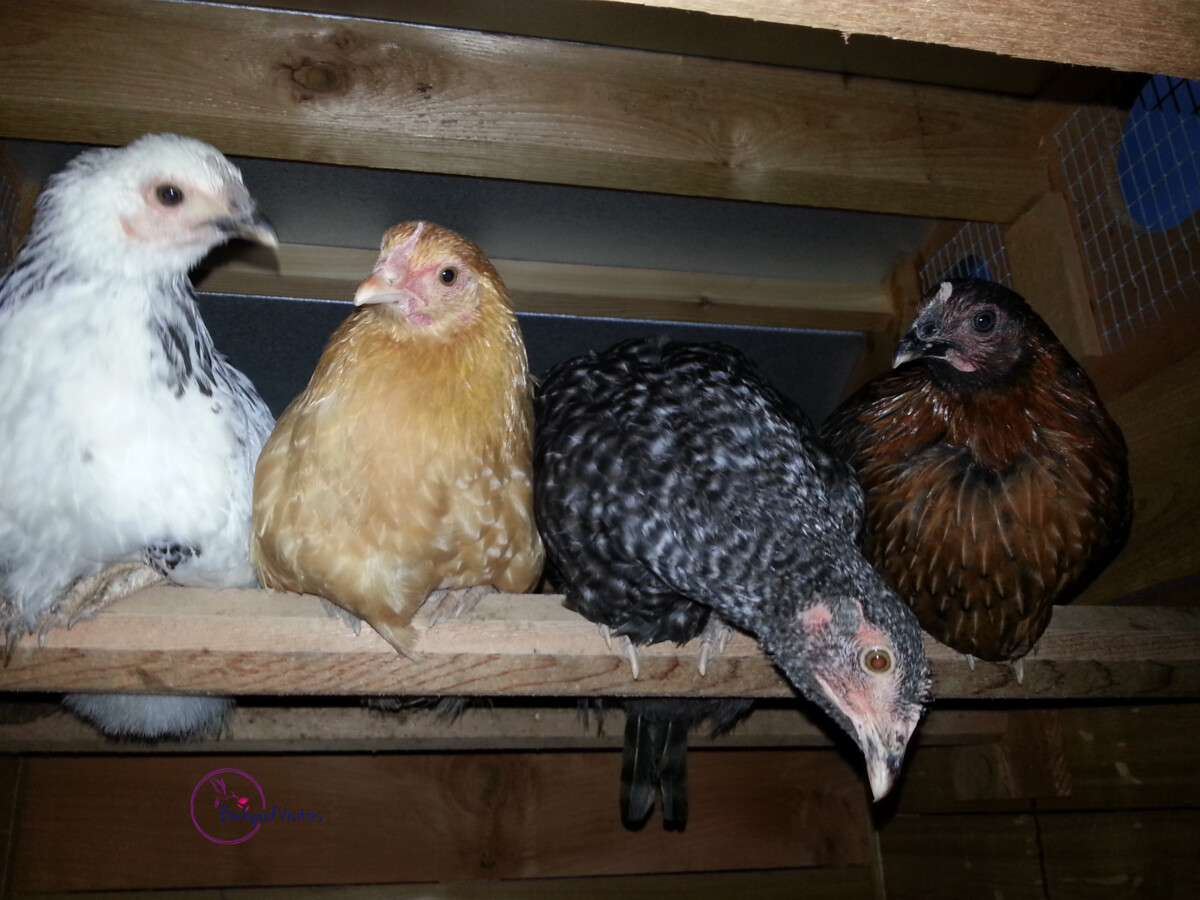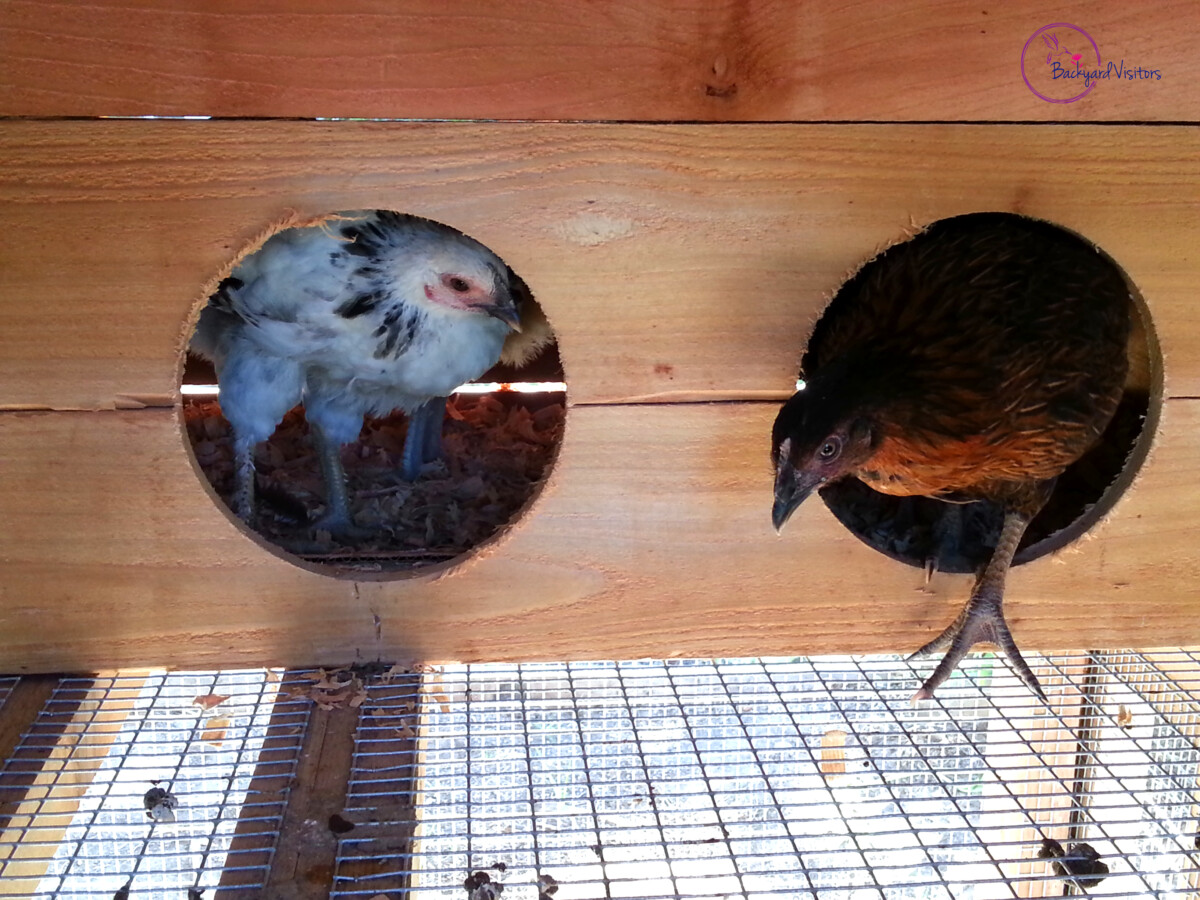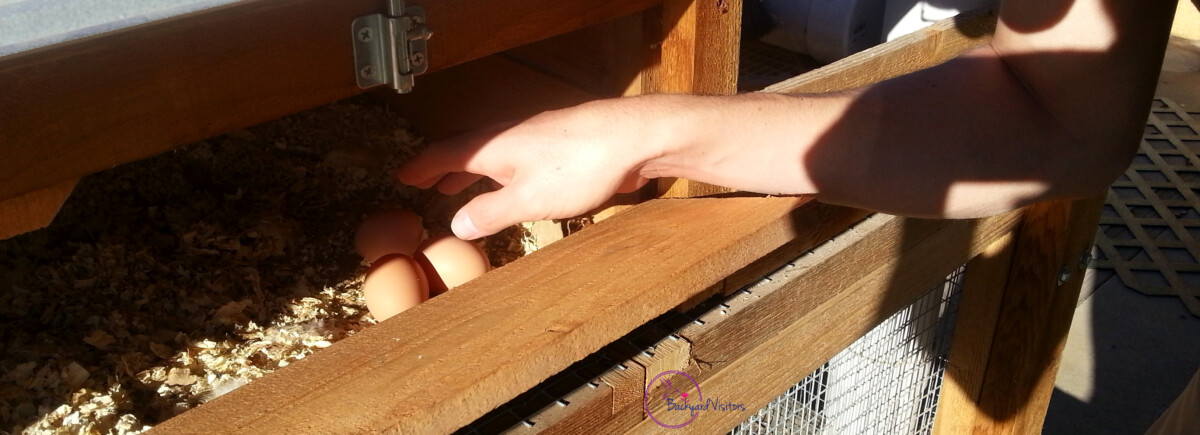This post contains affiliate links.
Welcome, fellow poultry enthusiasts! If you are setting out to create a haven for your feathered friends, you have come to the right place. Every seasoned chicken owner knows that crafting the perfect coop is paramount to your flock’s happiness and health. From sturdy walls, roosting bars, feeding troughs, nesting boxes to proper ventilation, I will cover the key elements that make a coop truly a home.
Understanding the Basic Needs of Chicken Coops
Every chicken coop needs to be a haven providing shelter, safety, and comfort. At its core, the essentials for chicken coops revolve around a few critical aspects.
First and foremost, chickens require protection from predators and the elements. This means sturdy construction and secure latches are a must.
The interior of the coop should include perches for roosting, as hens need a place to rest above the ground at night.

Nesting boxes are non-negotiable since every hen needs a cozy and private spot to lay her eggs. Ample space to move around and engage in natural behaviors is crucial. Overcrowding leads to stress and health issues.
Additionally, proper ventilation is essential to keep the air fresh and prevent respiratory problems.
Good drainage is also a basic requirement to ensure that the chicken coop stays dry and hygienic.
Do not forget about easy access for cleaning; your chicken coop should be convenient for you to maintain, as a clean coop is the foundation of happy and healthy chickens.
Top 11 Basic Needs Of a Chicken Coop
- Protection from predators
- Proper ventilation
- Adequate space
- Roosting bars
- Nesting boxes
- Access to food and water
- Lighting
- Insulation and temperature control
- Easy access for cleaning
- Materials that are easy to sanitize
- Protection from the elements (rain, wind, extreme temperatures)
Read my other related articles:
- Prefabricated Chicken Coop: An Essential Guide For Beginners
- DIY Backyard Coop Building Tips for Beginners
- The Pros and Cons of Pre-Built Backyard Coops
- Optimizing Your Backyard Chicken Coop for Safety, Comfort, and Productivity
- The Importance of Location and Orientation for Your Backyard Coop
- Adapting Your Backyard Coop for Changing Seasons
Assessing Chicken Coops: Prioritizing Features and Needs
When assessing a chicken coop design, understand the essential and priority features of the structure. A chicken coop needs to offer safety, comfort, and functionality to be considered ideal for my feathered friends.
Safety is the most critical aspect, therefore it is important to ensure that the coop is robust and predator-proof.
My chicken coop is placed on top of a concrete pad so that predators are not able to dig under the coop and attack my chickens.
Ventilation is another key feature. Without proper airflow, chickens face health issues. My chicken coop has adequate airflow for ventilation. My coop is positioned in my garden to take advantage of the local natural air currents of my area.
Sanitation is essential for the health of the chickens, therefore ease of cleaning should be built into the design.
Nesting boxes and roosting bars are important for their daily habits, therefore they are non-negotiable chicken coop features. My chicken coop has three nesting boxes, but also be aware that the chickens will have a preference for one nesting box and will fight over one particular nesting box.

Outdoor access grants chickens the pleasure of pecking and sunbathing, making it quite an essential aspect of their living space.
Finally, remember the weather: coops must shield your flock from the elements, which makes durability another special consideration. Balancing these priorities results in chicken coops that are not just functional but a haven for your chickens.
Key Features Every Chicken Coop Needs for Optimal Comfort
When it comes to the comfort of my feathered friends, knowing the essential features every chicken coop requires is crucial. A coop is not just a shelter. It is a home that incorporates security, comfort, and ease of maintenance.
Adequate ventilation is paramount; without it, moisture and diseases jeopardize your flock’s health.
Each bird needs enough space and room to roost, forage, and strut their stuff. Incorporating sturdy roosting bars and an accessible nesting area is another must-have chicken coop feature to encourage natural behaviors and egg-laying.
Durable construction to withstand inclement weather and predators is a non-negotiable characteristic every chicken coop requires.
Lastly, easy access for cleaning and gathering eggs makes life significantly easier because chicken coop maintenance is also about the chicken keeper’s comfort!

Notice the security latch above and the sturdy wire mesh below to keep predators out.
Securing Your Chicken Coop: Ensuring the Safety of Your Chicken
When diving into the world of backyard poultry, a secure chicken coop is as crucial as laying the first brick. Build a shelter that safeguards the well-being of your feathered friends since the coop is a fortress against predators and the elements. Incorporate robust locks and sturdy wire mesh which makes the difference between a predator-free haven and an unfortunate breach.
The safety of your chickens hinges on these essential features, as they need a space where they can roost without fear of harm. Reinforced defenses are key in every chicken coop, to ensure that threats, whether they are sly foxes or opportunistic raccoons, remain a fable rather than a nightly occurrence.

A little more expensive, but worth every penny!
With every chicken coop, consider the predators in your neighborhood and fortify accordingly. Make no mistake, a well-secured coop is a necessity for the safety and contentment of your backyard chickens.
The Essential Role of a Run in Chicken Coops
When considering the essential features that a chicken coop requires, one key element that must not be overlooked is the chicken run. This vital feature allows my feathered friends to indulge in their natural behaviors safely. Every chicken coop needs a spacious area where the flock stretches, forages, and basks in the sun, making the run a defining characteristic of their habitat.
Integrating a secure run into chicken coops serves a dual purpose. It promotes health and well-being by providing necessary exercise, as it equally reduces stress which impacts egg production and overall temperament. To ensure thriving chickens, prioritize by including a run. It is a non-negotiable component when crafting their living space.
Remember, a chicken run is not just an additional feature; it is one of the essential aspects that chicken coops need for a flourishing backyard flock.
Chickens Need Space: The Importance of Coop Size and Run Area
When planning your backyard poultry paradise, it is critical to understand that chickens need room to thrive. The coop size directly influences their happiness and health, making the importance of spacious chicken coops undeniable.
A coop that is too cramped leads to stress, pecking issues, and the spreading of diseases all of which we want to avoid.
Similarly, a secure run area provides essential room for foraging and exercise, promoting robust well-being. I can not overstate the importance of considering both the coop and run area when designing chicken coops. This ensures your feathered friends have enough space for all their activities.
After all, the coop is the epicenter of your chickens’ world. By giving your chickens the space they need, you ensure a coop that is not just a shelter, but a home where your flock will flourish.
Read my article:
How Much Space and Room Do I Need to Raise Chickens
Nesting Boxes: A Must-Have Feature in Chicken Coops
When you are deciding on a chicken coop, one feature you can not overlook is the nesting box. These must-have components are where your hens will comfortably lay their eggs, making them an essential part of every chicken coop. Ideally, in your coop, every chicken should have access to a nesting box, as this ensures that egg-laying is stress-free and productive.
The quality of the nesting boxes also matters as they must be cozy, private, and spacious enough to cater to the needs of your layers.
Nesting boxes are a key feature of chicken coop designs and should never be skimpy. A well-designed chicken coop features several nesting sites because a good rule of thumb is to have at least one nesting box for every three to four hens.
Incorporating ample, accessible nesting spaces contributes greatly to the optimal comfort and health of your flock, as nesting boxes are a fundamental chicken coop feature.
What Chickens Need for Laying: Comfortable Nesting Boxes
It is crucial to understand that a chicken coop must provide the ultimate in comfort and security. Nesting boxes are an essential feature, as hens require a cozy and secluded place to lay their eggs. Laying an egg is a private activity.
The chicken concentrates on her body and must feel relaxed to allow the natural process of passing an egg. If the living environment is chaotic and stressful, the chicken will be less likely to lay an egg.
Read my article:
Do Chickens Lay Eggs Year Round? Understanding Seasonal Laying Patterns
Each hen should have access to a nesting box that is lined with soft bedding, such as straw or shavings, to ensure they are comfortable.
As seasoned backyard chicken owners will attest, the happier and more content the chickens, the more likely they are to be productive layers. The prime goal is to meet every need for both safety and comfort within your chicken coop.
Not only do these boxes need to provide a tranquil retreat for laying, but they must also be easy to access for both your hens and you for cleaning and egg collection. Remember, comfortable nesting boxes are a cornerstone of a contented and fruitful flock.
Proper Ventilation and Air Quality: The Overlooked Essentials
When constructing, renovating, or evaluating a new chicken coop, it is vital not to overlook two of the most essential features: proper ventilation and air quality. Often, these aspects do not get the spotlight they deserve, but they are critical for the health and well-being of your feathered residents.
Proper ventilation in a chicken coop ensures that fresh air circulates effectively, reducing moisture levels and the concentration of ammonia and other harmful gasses.
This is about survival as well as comfort. Good air quality is paramount to prevent respiratory issues and maintain a fertile environment for laying. In well-ventilated chicken coops, your chickens’ immune systems get a natural boost, fending off illnesses with greater ease.
Securing your chicken coop and providing ample space and comfortable nesting boxes are important, the essentials of proper ventilation and air quality should never be sidelined as they are truly the backbone of a happy and healthy chicken habitat.
Maintaining Health with Adequate Chicken Coop Ventilation
In our journey to ensure essential chicken coop needs, ventilating the coop cannot be overstated. It is absolutely critical for maintaining health among your flock.
Adequate ventilation in a chicken coop does more than just provide fresh air; it is essential in preventing respiratory issues—a common ailment in poorly ventilated spaces.
Chickens need a constant flow of clean air to stay healthy, without this, the ammonia from their droppings builds up to toxic levels.
Properly designed ventilation systems work wonders for regulating temperature, reducing humidity, and minimizing dust, all of which contribute to a healthy coop environment.
Consider automated vent systems that keep the balance just right for your chickens’ needs. By securing not just the safety of the coop but the air quality within, you are laying the foundation for a thriving home for your feathery friends. Remember, a coop that breathes is one where chickens flourish!
Listed below are 5 health conditions due to inappropriate ventilation
in order of importance.
- Respiratory Diseases: Poor ventilation leads to an accumulation of ammonia and dust, which irritates and inflames the respiratory tract of chickens, leading to conditions such as chronic respiratory disease (CRD) and infectious bronchitis.
- Heat Stress: Inadequate ventilation causes high humidity and temperature levels, which leads to heat stress. This affects the chicken’s metabolism, reduces egg production, and increases their susceptibility to diseases.
- Airborne Diseases: Insufficient ventilation fosters the spread of airborne pathogens, increasing the risk of diseases such as Avian influenza and Newcastle disease, which is fatal. These diseases spread rapidly through a flock.
- Eye Irritations: High levels of ammonia from droppings causes eye irritations and corneal lesions, which leads to blindness in severe cases and affects the chicken’s ability to locate feed and water.
- Skin and Foot Problems: Poor air quality contributes to high levels of moisture and litter quality issues, resulting in skin diseases such as breast blisters and foot pad dermatitis, which leads to lameness and reduced welfare.
Essential Considerations for Chicken Coop Flooring and Cleaning
When considering the essential features of a chicken coop, proper flooring and ease of cleaning are important as they serve multiple purposes – from ensuring the health and hygiene of your feathered friends to making maintenance less of a chore for you.
The right flooring dramatically impacts the cleanliness of the coop and the wellbeing of your chickens. Essential considerations include material that is easy to clean, perhaps with removable sections for quick sanitation.
Your coop needs to include surfaces that repel pests and resist deterioration from waste.
Remember, a chicken coop’s need for cleanliness is as vital as its need for security. Furthermore, for efficiency in cleaning, everything must be accessible. A coop’s deep-litter method might need occasional refreshing, another key aspect to think about. Without a doubt, the coop’s upkeep plays a pivotal role in your flock’s health, and should never be underestimated.
Check out my other posts on Backyard Chickens
Frequently Asked Questions
Q: What are the essential features that every chicken coop needs?
A: Chicken coops require sturdy construction for protection against predators and elements, secure latches, perches or roosting bars, nesting boxes for egg-laying, sufficient space to prevent overcrowding, proper ventilation, good drainage to stay dry, and easy access for cleaning and maintenance.
Q: Why is safety the most critical aspect of chicken coop design?
A: Safety is paramount to protect your flock from predators and harsh weather conditions. A securely built coop with predator-proof locks and sturdy wire mesh keeps your chickens safe from potential harm, ensuring that they can roost in peace.
Q: How important is the inclusion of a chicken run in the coop design?
A: A chicken run is vital as it gives chickens the opportunity to stretch, forage, and sunbathe within a protected environment. It is essential to promote health, reduce stress, which can affect egg production, and to ensure the overall well-being of your flock.
Q: Why is proper ventilation and air quality critical in a chicken coop?
A: Adequate ventilation ensures fresh air, reducing moisture, ammonia levels, and other harmful gasses. Good air quality is crucial to prevent respiratory issues, keep the immune systems of your chickens strong, and create a healthy environment conducive to laying eggs.
Q: How does the right flooring and ease of cleaning impact the health of a chicken coop?
A: Proper flooring that is easy to clean, pest-resistant, and durable is essential to maintain the coop’s hygiene. Coupled with ease of cleaning, including accessible areas and potentially removable sections, it ensures a sanitary space for your chickens, which is key to their health and happiness.
Happy Backyard Chicken Raising!
Backyard Visitors participates in affiliate programs which compensate us for referring traffic.

